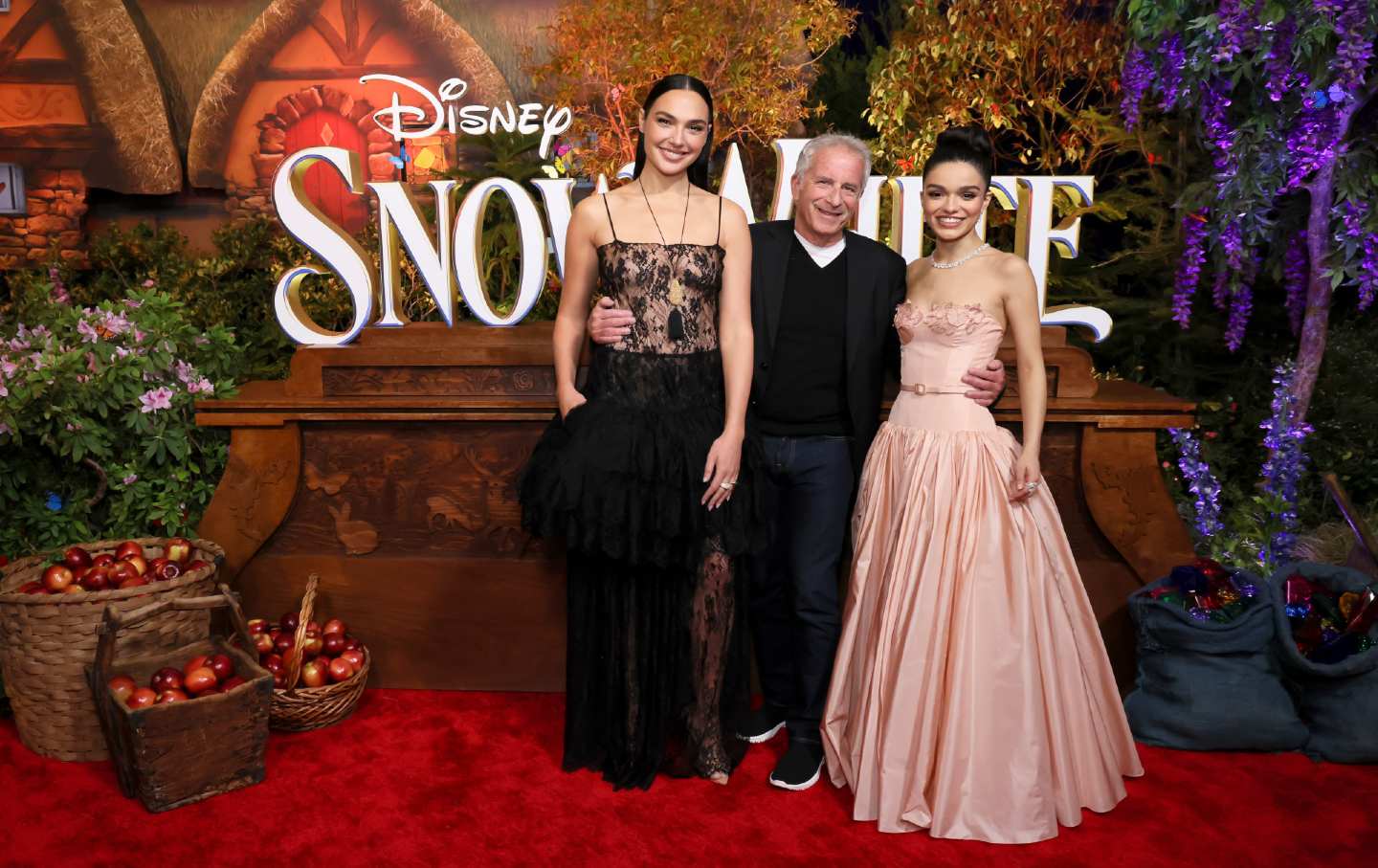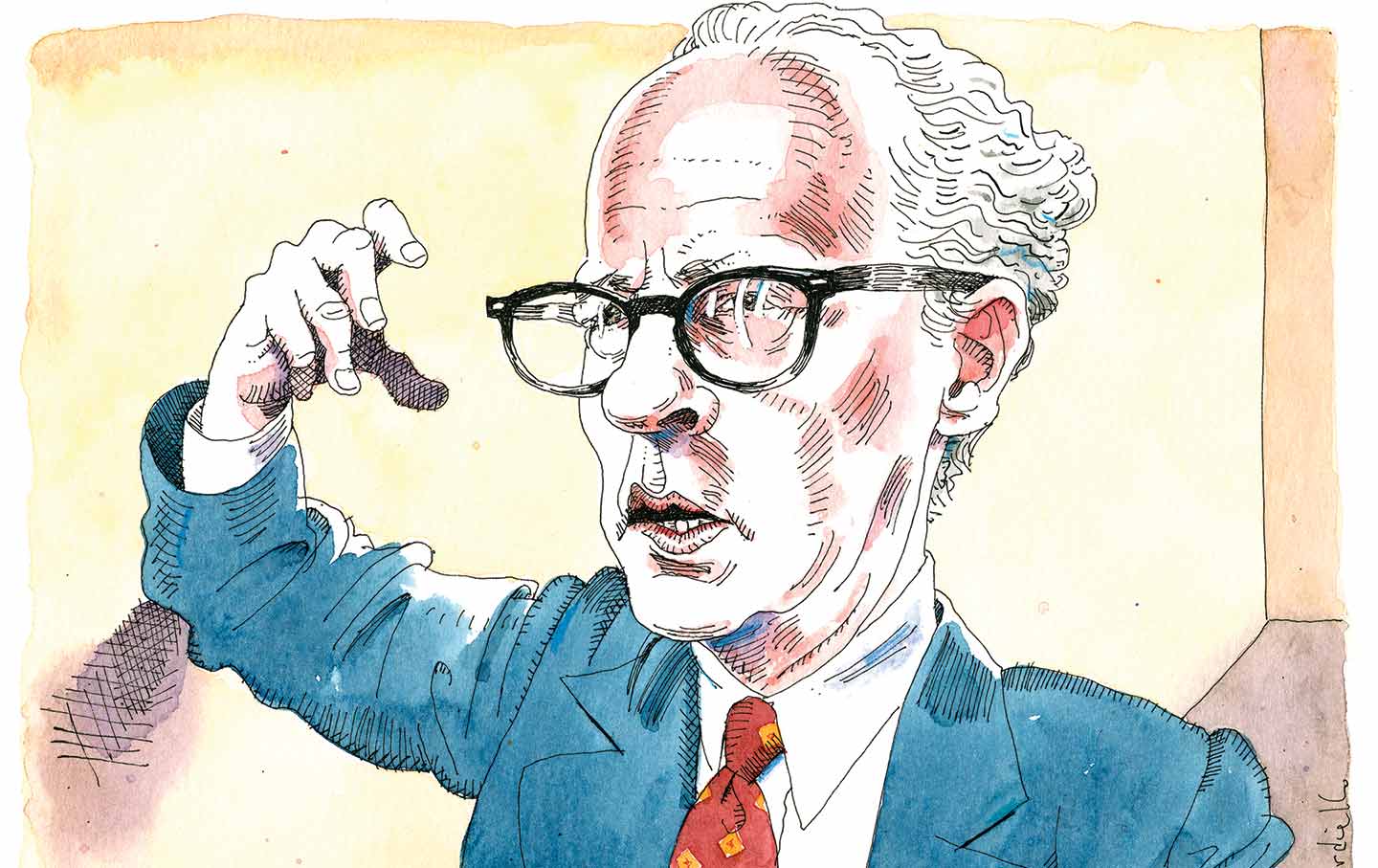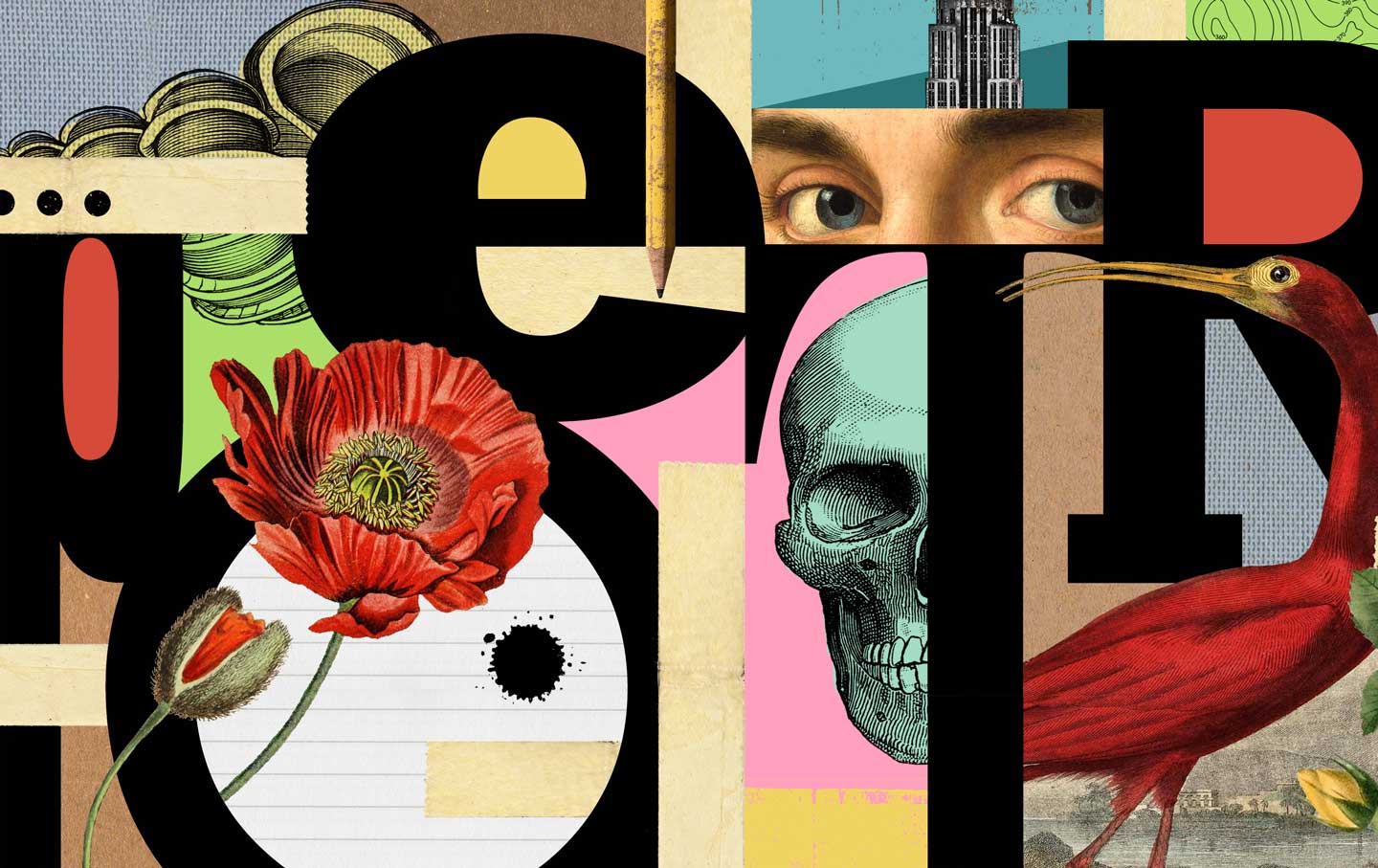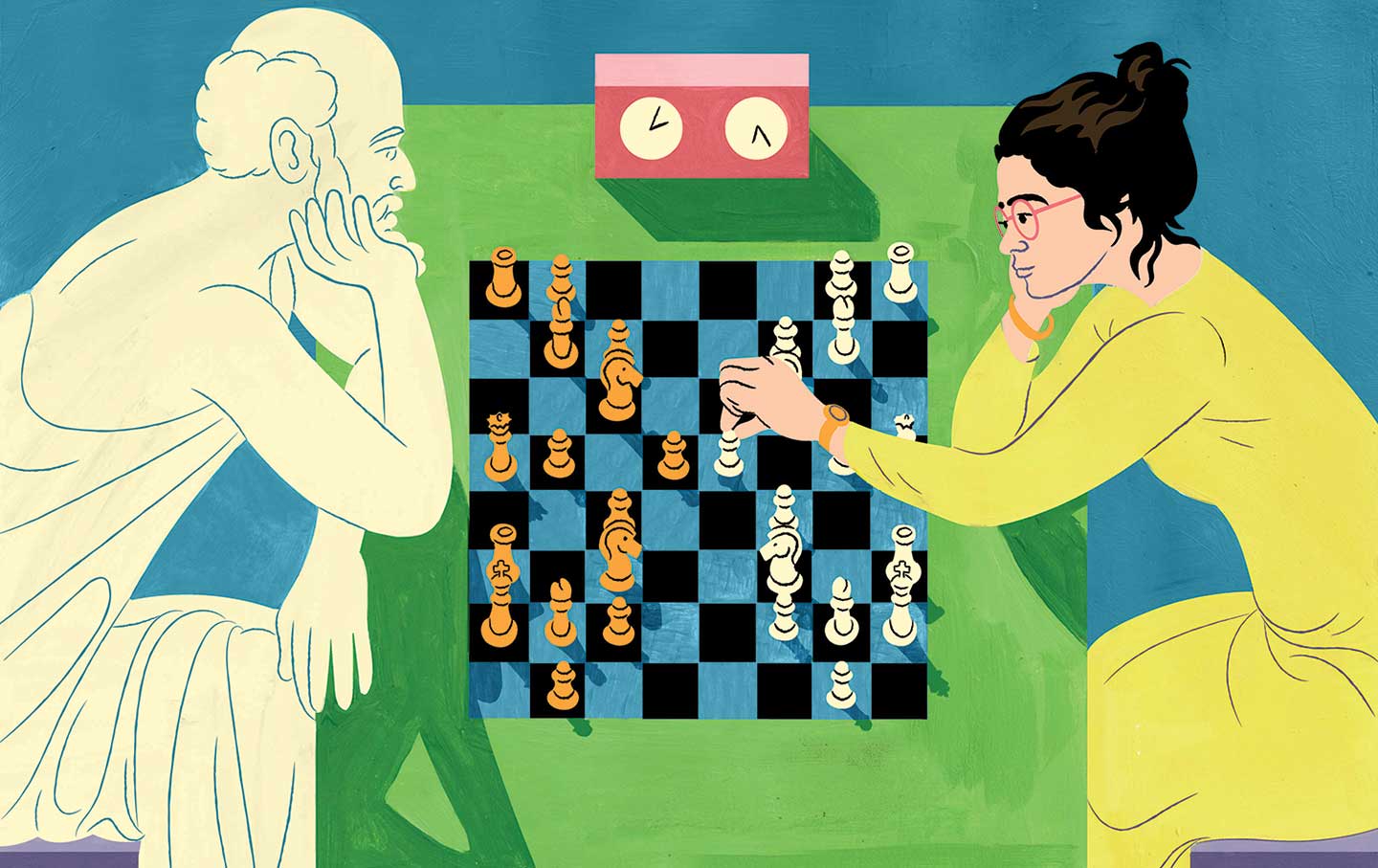The Dark Message of Killers of the Flower Moon
The Dark Message of “Killers of the Flower Moon”
Unlike the visions of unbounded freedom found in traditional westerns, Martin Scorsese’s new film is a study of a West bounded by the vertical geometry of oil rigs and the violent conspiracies of powerful men.

(Courtesy of AppleTV)
(Courtesy of AppleTV)Martin Scorsese’s Killers of the Flower Moon is set on the open prairies of Osage County, Okla. Its colors are the colors of a time still in touch with the earth: tree bark and aged leather, bitter blues and drained grayish greens, linen, limestone, the warm glow of flame and amber glass. Everything is dusty, weathered, and smoky. The sky is always pale and the nights always cool.
Scorsese has made a career of colorful epics. His 27th feature, a sweeping story painted on a grand Western canvas, is no different. Yet unlike the flat landscape of a traditional western, the horizon in this film is not the unbounded space of American freedom: This is a horizon hedged in by the upward sprays of oil and the stark verticality of oil rigs. In place of a story about the open frontier and the continued expansion of the West, Killers of the Flower Moon instead narrates the insidious ploys of the powerful to obtain a wealth whose boundaries have been clearly delimited. Before us is a West with more cars than horses, more contracts and bureaucracy than lawless rogues, and more ringleaders and henchmen than solitary heroes making their way into the sunset. Characters don’t face off but speak at angles. They keep their true selves out of view. In this western, white men prey on members of the Osage nation; they plot to extract their fortunes, to inherit their headrights and the income those bring. Violence, poison, and insurance scams are some of their tools, but so are tutelage, marriage, and trust. The villainy Scorsese depicts in Killers of the Flower Moon is perhaps the most devious of his films, but also the most wretched and unrelenting.
Killers of the Flower Moon is based on David Grann’s Pulitzer Prize–nominated nonfiction book bearing the same name. The story is primarily set in the 1920s in Osage County. Displaced from Kansas by the US government, the Osage Nation had settled there on a landscape apparently barren and undesirable until oil was discovered at the turn of the century. Soon, money and its evils are everywhere. Tribal members get rich selling the rights for oil drilling, but as their shares’ dividends grow into thousands of dollars, their conspicuous wealth makes them targets. One of the wealthiest communities per capita in North America, the Osage find themselves surrounded by people who would lie, steal, cheat, and offer love to get that wealth. This is no easy feat: The headrights can be obtained only through marriage or inheritance. Getting your hands on them requires more than just brute force.
At the center of Grann’s book is a set of unsolved crimes: a slew of unsolved murders, then called the “Reign of Terror,” that tormented the Osage from 1921 to 1926, and the corresponding emergence of a Bureau of Investigation (the eventual FBI) that finally arrives to determine who is doing the murdering. The book is meticulously researched and as diligent in setting the context for these shocking acts as it is in examining J. Edgar Hoover’s role in shaping the bureau and using the murders as a showcase for it. In the book’s final section, Grann transitions into his firsthand experiences with the families and communities that continue to be affected by the murders. For Grann, his story is also a meditation on what it means to try to tell a brutal moment in history—how to pay homage to the lives lost and to also make clear who is responsible for this loss of life when faced with a historical record marred by the same conditions that enabled the murders in the first place.
Despite what you might think of its three-plus-hour runtime, Scorsese’s retelling ends up being narrower in focus. It does away with much of the original’s sense of suspense and Hoover’s role in the investigation, and instead focuses on how an individual descends, through greed, complicity, and cowardice, into unforgivable acts of despoliation and violence. It is a theme familiar to Scorsese’s other films about criminals, but this version is sadder and more pathetic. There is little eye candy or luxuriating in the spoils of larceny.
At the film’s outset, we meet Ernest Burkhart, played by Leonardo DiCaprio, who returns from world war to Osage County to serve as his uncle’s errand boy. His uncle, William King Hale, played by Robert De Niro, is a wealthy local rancher and has his eyes on the Osage headrights. Ernest isn’t particularly bright or competent, but he has bright blue eyes and is pretty enough to be put to work in Hale’s scheme. He employs Ernest as a livery driver, and it is in Ernest’s rear view mirror that the young man meets Mollie (Lily Gladstone). With Hale’s encouragement, Ernest soon courts and eventually marries Mollie.
Mollie is a self-possessed and skeptical woman and has, as a full-blooded Osage, headrights that interest Hale. When Ernest and Mollie marry and start a family, only Mollie’s blood relations stand in the way of Ernest’s and, thus Hale’s, acquiring the headrights.
Hale has spent years worming his way into the Osages’ esteem, so no one suspects his involvement when the bodies start dropping. We almost believe that he believes it when he says how much he loves and admires the Osage. He proclaims himself an agent of progress and inevitability—almost a merciful force. But Hale’s “mercy” is lethal. He enlists neighbors, doctors, lawyers, insurance agents, law enforcement, scoundrels, and relatives in his relentless schemes and cover-ups. His cover is so strong that he sits in a position of honor at tribal meetings and at the funerals of men and women whose death he has orchestrated. Over the course of the film, Hale’s presence grows ever more malignant. His malevolent spirit hovers and lingers in places where he should not be.
After Mollie and Ernest get married, Hale haunts their relationship, too. If the right people die in the right order, then her mother’s and three sisters’ headrights will flow as an inheritance to Mollie and through Mollie to Ernest and into Hale’s own devious control. There’s no limit to what he will do in order to achieve his scheme. It is a conspiracy to destroy everyone Mollie is close to and on whom she might depend. We plead for her to suspect her husband, but she has no options and, eventually, no one else to turn to who is not playing a part.
When we first meet Mollie, she is holding herself squarely with a blanket folded perfectly over her shoulders. She is composed and unflappable. She observes the world around her with a dignity unfamiliar to Ernest. Early in their relationship, the pair sit in Mollie’s mother’s house waiting for a storm to pass. Ernest reaches for a glass of whiskey, but Mollie stops him. It’s a vision of them in which Ernest is not forever going after his next indulgence.
Popular
“swipe left below to view more authors”Swipe →Mollie and Ernest’s relationship is the story of deceit, but it is premised on a true tenderness. Ernest starts from pure greed, but eventually sees the terror he helps to wreak on the people around him as necessary to protect his wife and family. He maintains his conviction that he loves Mollie and sees his actions—murders, cover-ups, and even poisoning her—as an expression of this love. Mollie, meanwhile, is unable to face the reality of her husband’s complicity in the suffering and death around her until it’s too late. As her health declines from diabetes and poison, she sees threats everywhere, even in her doctors, but she is finally too ill to turn the same eye to the man that holds her through her feverish chills.
Mollie’s is a physical journey, a story of declension: She moves from strength to despair to weakness, deterioration, and then, ultimately, possibly a resurgence. We see her posture broken. We see her sweat and burn in her bed from a mysterious illness and see her resolve drained by the loss around her. The role, and arguably the whole film, might not work without Gladstone’s acting: She imbues her character with a presence that steadies the chaotic violence and conspiracies of the rest of the story. It’s probably correct to call Mollie, as others have, the heart or the soul of the film, but that’s a kind of concession, what we call someone when they are not the movie’s main focus. Even with much less to do than her husband, Mollie becomes a locus of feeling and humanity in the film.
Inhumanity is everywhere else in Killers of the Flower Moon. Bodies accumulate; the loss of life begins to feel unstoppable. Corpses are arranged for funerary services and shot with Petzval lenses, blurring dramatically at the edges, as if they are already entered into the history books. Time starts to blur too. How much time passes from one death to the next? In one scene, we see Hale accost a man who sports a black eye. The man who imparted the black eye is long dead at that point, so we are left wondering when was that assault and when was the assassination? The violence muddles the chronology as more death and panic prevail.
By the time federal agents arrive to investigate the massing number of murders, we are desperate for justice to be served. But unlike the book, which spends ample time on the federal agent’s life story and Hoover’s opportunism, the film never commits to a shift in perspective. We primarily stay with Ernest as the investigation starts to box him into a confession. After Ernest has been arrested and interrogated, he meets Mollie in an open field and the pair embrace. Even then, there is still something between them. But Mollie will see Ernest for what he is, and the world will see Hale for what he is. The investigation and the courtroom provide a resolution that the film, in many other ways, undermines.
Much of the marketing and press surrounding the film has been about the production itself: how carefully Scorsese worked with Osage experts and how much attention was paid to authenticity and verisimilitude. Scorsese has explicitly drawn comparisons between his attempts to build trust with the people whose history he was going to depict and the obliteration of trust that forms the center of the film’s story.
Yet if the film is going to make claims about authenticity and moral responsibility, it can be criticized on those same points. For while it might raise awareness of a tragic and unspeakable period in US history in which the Osage people were systematically exploited and violently harassed, it does not really serve as a document of the culture and worlds that white Americans sought to destroy or the social and political forces that enabled them. It is not the Osages’ history. Nor is it even a catalog of the laws and institutions and political interests that enabled Hale’s conspiracy to exist or of the wide-ranging networks of complicity that undermined the culture and communities of the Osage people. It is, instead, a tale about a one single conspiracy, one group plotting with expected impunity.
In this way, Scorsese’s Killers of the Flower Moon differs considerably from Grann’s. Grann’s book ends by considering how the murders and violence against the Osage affect its people to this day—how the violence still haunts its community, how families deal with unanswered and unanswerable losses, how the cogs of conspiracy expanded way beyond what the government and the investigation would acknowledge in their ploy for a definitive victory. It is a story about the violence that makes its way into the present.
The film instead ends with an epilogue, a production of the Lucky Strike Hour radio show, that shines a spotlight on how the murders and investigation were already folded into a kind of national narrative of justice less than a decade after Hale and Ernest’s convictions. This insertion by the filmmaker could be viewed as a kind of self-critique, an acknowledgement of how these stories tend to conclude, content with raising awareness paired with a closed case. But it is only with the last shot that the film challenges the preceding narrative: Opening with an overhead view of a circle of Osage setting a drumbeat in unison, the camera rises steadily, revealing a slightly larger circle of Osage seated around the drum, and then rises even more, to rows and rows of dancers, moving counterclockwise in a giant, shifting circle. As the camera continues to ascend, the Osage dancers form a giant eye staring back at us through the screen. Though the rest of the film’s perspective is tightly pegged to the conspiracists, the final image is without victims or villains. It is another gaze, an opening—a shift in perspective.








